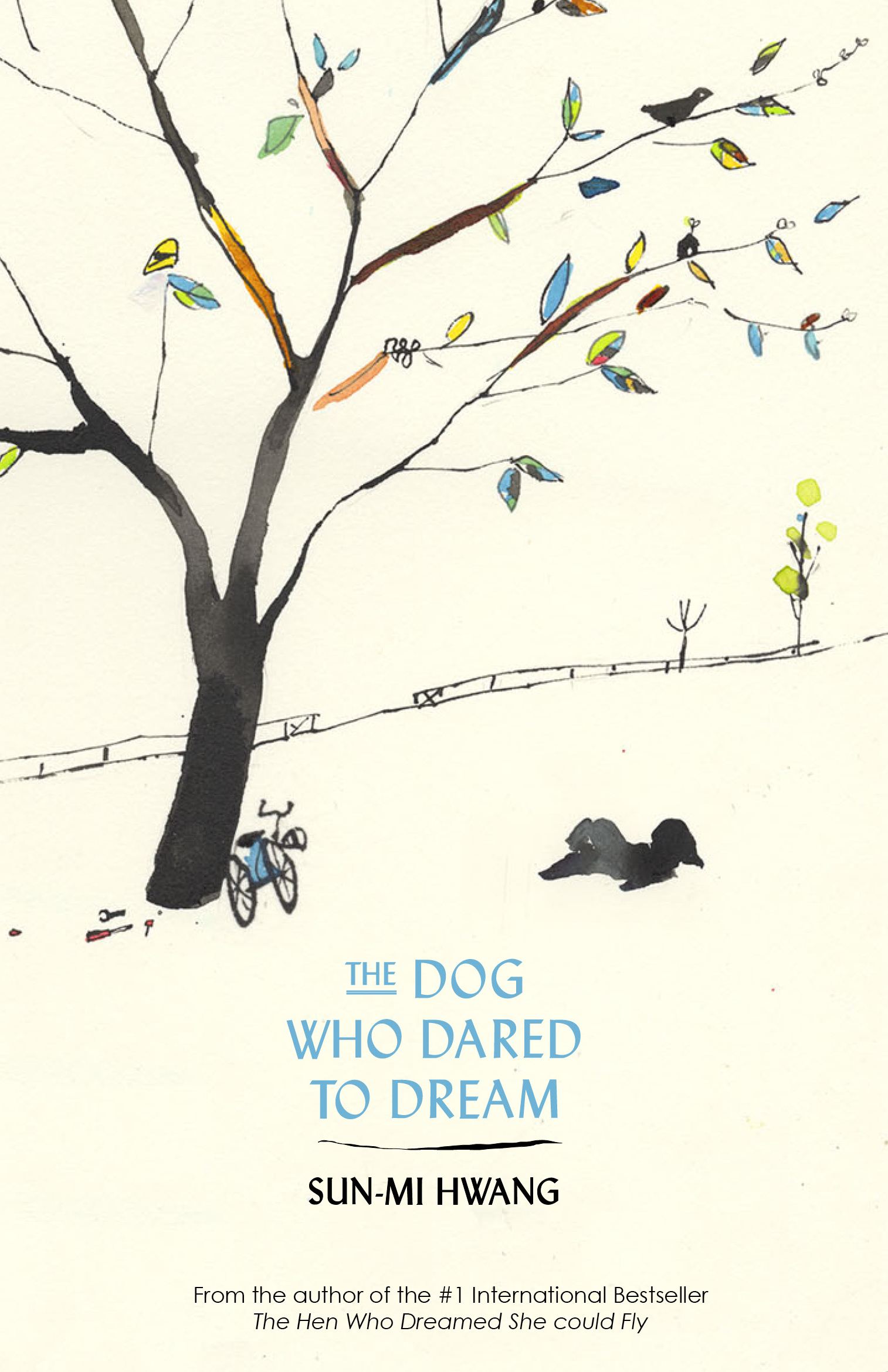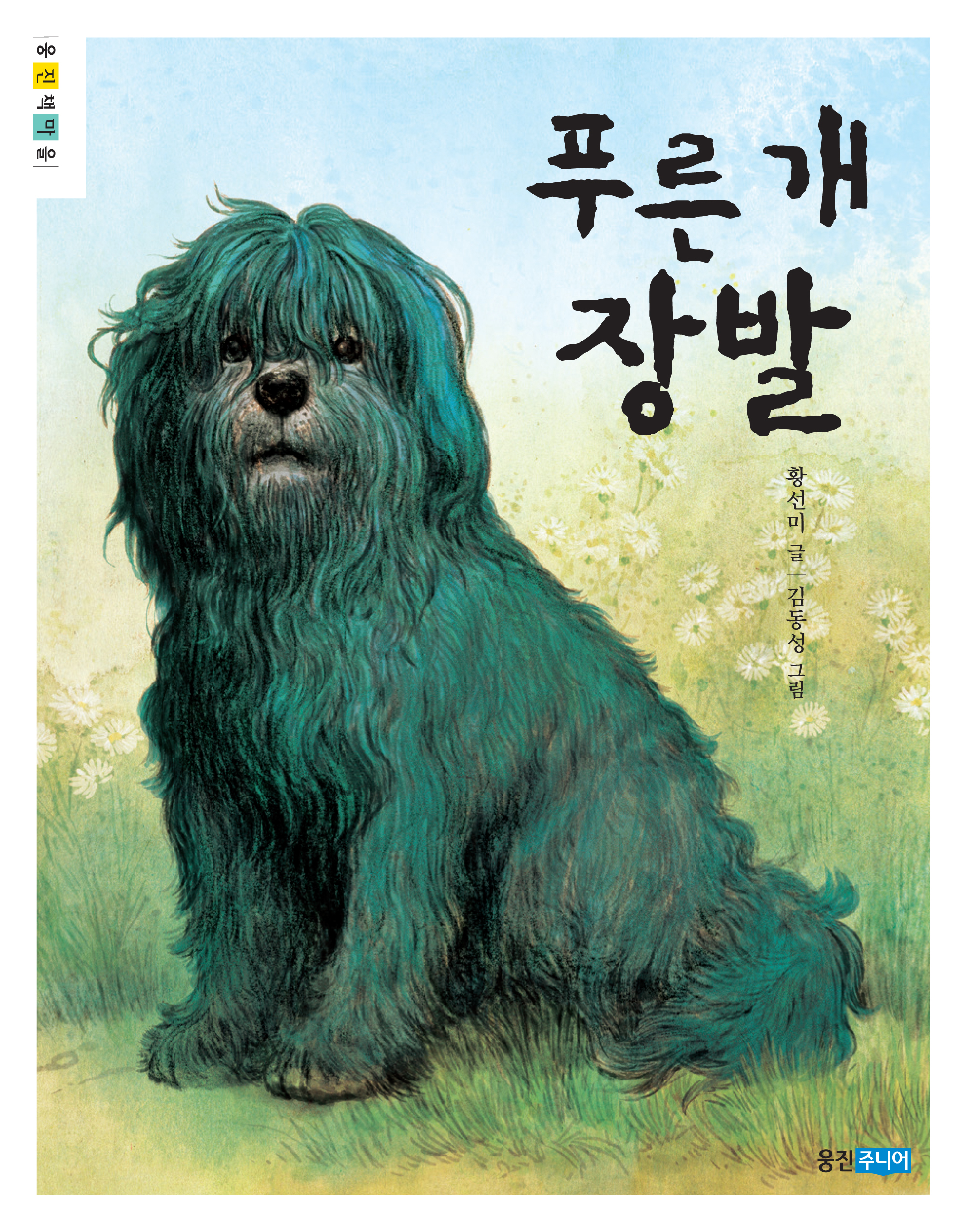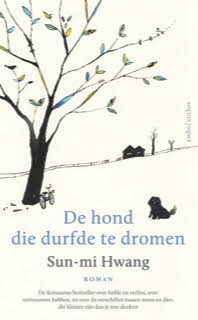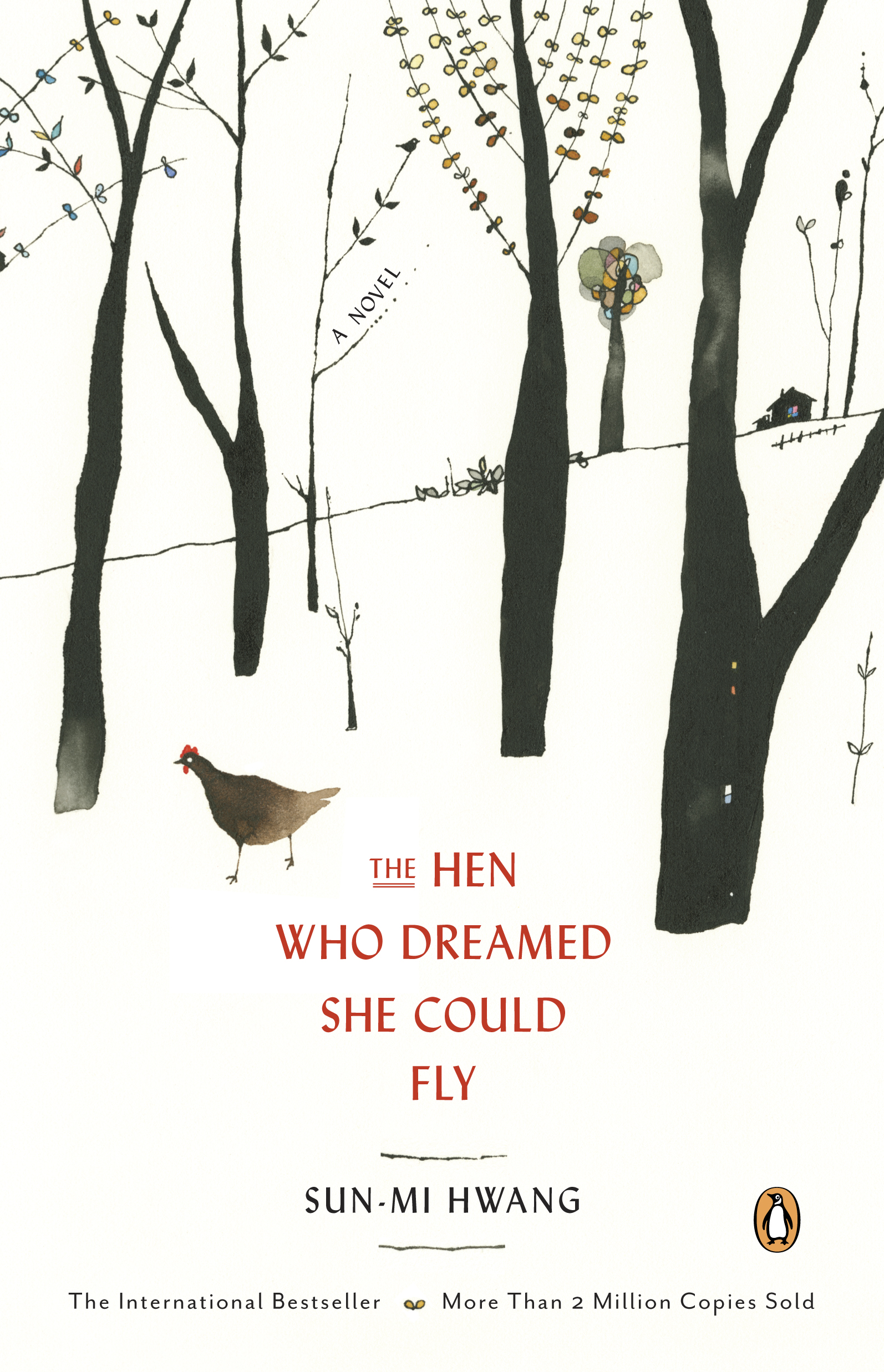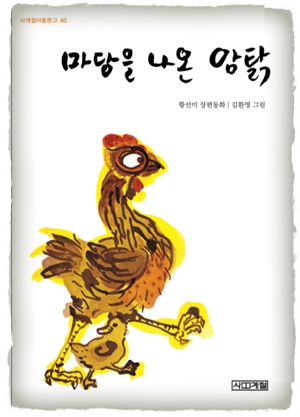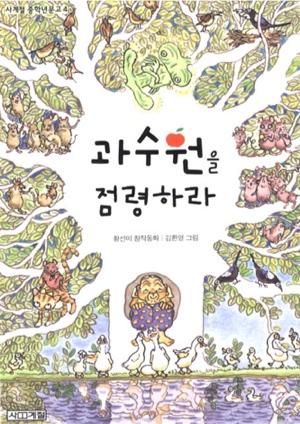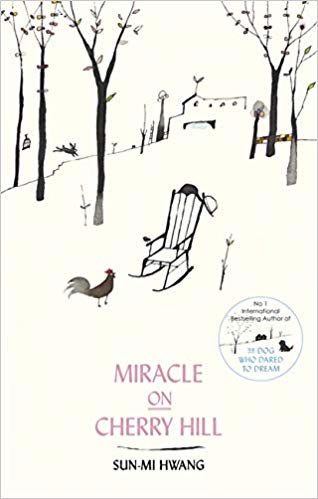Sun-Mi Hwang
Books
The Dog Who Dared to Dream
Chi Young Kim, Translator, illustrator Nomoco.
Ailah Ahmed at Little Brown UK. Publication July 16, Dioptros/Greece
Bestselling author of THE HEN WHO DREAMED SHE COULD FLY – Viking Penguin/US, Oneworld/UK, Kein & Aber/Germany,Bompiani/Italy, the Post Publishing Co. Ltd/Thailand,Gyldendal Norsk/Norway,Linking/Taiwan,Athenaeum/Greece,Iztok-Zapad/Bulgaria,Jieli Publlishing/China,Mizan/Indonesia,Centrepolygraph/Russia,Art SRl/Romania,Gottmer/Holland,Geracao/Brazil,Dioptra/Greece,Argo/Czech Republic,Arab Scientific/World Arab,Flammarion/France,Penguin Random/World Spanish, Sitruuna Kustannus Oy/Finland. Sold to Ailah Ahmed at Little Brown UK /UK & COMMONWEALTH. Sold to Kein & Aber/Germany. Partial available. Full ms. in December.
“The Dog Who Dared to Dream” is yet another masterpiece from Sun-mi Hwang that portrays hefty pondering on the subjects of life and death as the old man and dog struggle over whether to sell the puppies for extra money or to keep them for good, and also touches on the subject of the equality of all life, as the thoughts and feelings of both man and animal in the story are treated with equal respect. Born with distinctive features that make her the ugly duckling among the family, Jangbal suffers ridicule from her siblings and even her own mother, but shows more love for her family than any other. Then one day, while her owner, Mokchung has left the house, a thief breaks into house and using food, lures Jangbal’s family away, as she fights back with all her life but in the end is only left with deep scars and loses her family as well. Afterwards, Jangbal begins her new fate as a surrogate mother in Mokchung’s house. Jangbal then mothers the puppies that she’s given birth to between a white dog she coincidentally met on the road, and raises them with affection, but suffers great pain when the pup that especially took after her distinctive features dies. To make things worse, when Mokchung sells the remaining puppies for extra cash, Jangbal refuses to concede and bites his arm, barking wildly in protest for him to bring back the puppies, but it doesn’t take long for her to realize that they are gone for good. Over time, Jangbal witnesses the aging of the repulsive cat next door, goes through emotional tug-of-wars with the new hen who just moved in, and relishes the brief yet blissful period of raising Gori her pup. But this somewhat peaceful routine is shattered when she finds both the hen and cat as cold bodies after their wild bout of pecking and scratching. To make her scar irreparable, Gori who was sold away by Mokchung makes it back home, only to die right after. Along with these tough incidents and the passing of time, Jangbal who seemed untamable gradually comes to understand her old owner and Mokchung also begins to treat Jangbal no longer as a pet but life companion. The two grow old together like that. And as they encounter each other at the end of the road of life, Jangbal comes to forgive her master, and the two leave this world together.
The Hen Who Dreamed She Could Fly
First published by Sakejul,2000/Korean. World English rights sold to John Siciliano/Viking Penguin - publication Fall 2013, and Bompiani/Italy, Flammarion/France, Kwaity Orientu/Poland, Linking/Taiwan, Heibonsha/Japan,Nha Nam/Vietnam, China, Geracao Editorial/Brazil, Arab Scientific/World Arab rights.
Million copy plus Korean Classic bestseller. On the bestseller lists in Korea for over ten years.
Who am I and how should I live?
Here was a hen with a correct understanding of who she is and how she should live, and practiced it accordingly. At first, she was caged in a factory-style coop to endlessly produce eggs. Then one day she saw another hen taking her chickens for a walk in the yard. This hatches in her a thought; she wants to brood on her own egg and give birth to it. For this mission, she even gives herself a name. She chooses Leafie for her name because she wants to accomplish something, just as an acacia leaf, after freely receiving wind and sunshine, down to the ground, fertilizes the earth, and finally sprouts a fragrant flower. This marks her first step as someone who truly owns her life.
But how difficult it is to live one's own life! To start her life over as a true hen, Leafie decides to leave the comfort zone of the coop and yard where she doesn't have to worry about getting food. She even chooses to be the mother of a different animal, a wild duckling. After raising the duckling with all of her heart and soul, she sends it off into the world.
Some time after that, she loses her life to a weasel that had been waiting for the opportunity to kill her. The reader is deeply touched by Leafie's painful struggle to lead a truthful life, her attainment of freedom, and realization of her dreams, as well as the true meaning of love.
Miracle on Cherry Hill
Translated by Chi Young Kim – Little Brown UK
This is the story of a man named Kang Dae-su. His whole life is a miracle, rising from poverty to running a successful construction company. In his twilight years, Kang is diagnosed with a brain tumour. He returns to his childhood home of Cherry Hill. He acquires a crumbling old house in which to retreat from the world, yet the residents of the town have other plans. They seem hell-bent on intruding on Kang's private property. But who does the house, and Cherry Hill, really belong to? Is it owned by the construction company who is trying to rejuvenate the neighbourhood? Or does it belong to the residents who have used the land to play, think, walk, love and explore for generations? And how is the bitter and despondent Kang's childhood tied to this magical place?
Miracle on Cherry Hill is a redemptive story of a damaged man regaining his trust in humanity. It explores the fragility of nature and human lives and is much-loved classic in South Korea. Includes beautiful illustrations inside.
Into the Orchard
Sakejul Publishers/Korea 2003, 224p. Illustrator: Kim Hwan-young
Set in an orchard that has been preserved undamaged, despite its location in the center of a new city, because it is within the media communication facility protection zone. This rural community, which once had the beautiful name “Pear Flower Village,” has been broken up due to urbanization and only the orchard is left behind as a reminder of the village. In order to avoid the confusion that the title may create, I must clarify that this orchard is not a space that can be possessed exclusively by any one person. One might say the grandmother’s family is the obvious owner of the orchard but it is only humans who think this. The orchard is the home of a duck family and generations of a magpie family, hometown of gray starlings and the place where field mice want to move. In short, Pear Flower Village orchard is a rich ecological space bustling with many forms of coexisting lives.
This book has six stories that are linked together in an omnibus style. Diverse characters appear in each story to breathe life into the ecological imagination of the story: The duck family goes on a picnic to catch bullfrogs; the timid pet cat Hopi grows into a confident wild cat; a group of mice have to find a new home because they are chased away from the vacant lot they have been living in; conflicts originate from pride arising between resident magpies and traveling starlings; the grandmother’s family hopes for the birth of a baby; and a tree has been acting as a tutelary deity of the village for the past 250 years while living in a big old willow. As relationships in nature always are, they live entangled by a net of connections. Looking for the scenes of their short encounters will add to the fun of this book. The main character of one story may be a secondary character or make a surprise cameo in another story.
Of all the characters, a tree sacred to a tutelary deity, or seonang, is the only folk character that is based on Korean folk religion. In Korean tradition and culture, seonang is the village deity that shares the joy and sadness of Korean people and makes their wishes come true. This tree spirit has lost most of its former powers because people have lost their faith in the sacred and their ability to communicate with nature has weakened. The tree spirit laments that the tradition of gosure, where people considered the share for deities and nature by throwing bits of food on the ground before they ate in mountains or fields, has disappeared; people have become greedy and cold-hearted. This makes us re-examine the meaning of community life that has been destroyed in the process of modernization and the co-existence of humans and nature.

